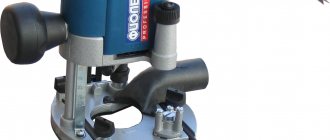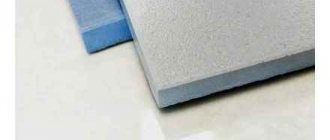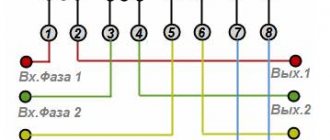An electric drill is a universal tool, since its chuck can hold not only drills and cutters, but also wooden parts if the device is used in a lathe. The need for a drilling machine arises when a home craftsman needs to drill holes strictly at right angles. In this case, the master is faced with a choice: buy a ready-made stand for drilling or make a machine from a drill with your own hands. We will tell you how to implement the second option.
Selecting materials to create a device
Very often among home craftsmen there are those who try to make their own lathe from an electric drill.
The manufacturing process is not at all complicated, and to achieve the desired result you will need to take all the necessary materials to prepare them in advance. In the production of the machine, woodworking materials can be used, but you should be aware that with such devices you can only process small parts and workpieces, for example, make handles for knives, handles for furniture, etc. If you need a reliable sled that you plan to use very often, then it’s worth investing once and making it out of metal.
Selecting an Electric Powertrain
When choosing a motor to power the turning system, it is necessary to clarify how powerful it is. For the construction of a homemade self-heating unit, an indicator in the range of 1.2 - 2 kW is quite sufficient. In this case, you should find out exactly what scheme the connection is made according to.
For desktop woodworking, a motor from a household centrifuge is sufficient. Although he is not able to provide turning of a massive workpiece, he will definitely master the processing
- Miniature souvenirs;
- Kitchenware;
- Various types of furniture accessories.
Lathe capabilities
Initially, I used a Soviet-made drill with thyristor speed control and a power of only 300 watts. It worked for me until the collector mechanism wore out for more than 30 years under various loads, including extreme drilling of concrete slabs. Rotary hammers were simply not on sale at that time.
This power is enough for leisurely small crafts. But for normal operation, it is better to use the design of a modern drill with at least 800 watts. The difference will immediately be felt.
For many types of work, high rotation speeds are not needed: you have to use a regulator. In this mode, the load on the engine increases, and a reserve of its power, and the entire structure, is simply necessary.
In order to increase the efficiency of the lathe, instead of a drill, I installed a three-phase asynchronous electric motor, giving it a capacitor start from a single-phase network.
This made it possible to turn long and strong workpieces like the handles of shovels and other country tools.
To attach the wooden workpiece to the engine, it was necessary to make a bushing with a locking screw on the rotation shaft and an W-shaped tip inserted into the center of the wood cut.
All the photographs show that my lathe was made a long time ago, and is stored in a workshop where humid air penetrates. Over the course of several years, clearly visible signs of corrosion appeared. Don't let this happen to your instrument.
If you are thinking about creating a lathe design for wood processing not from a drill, but from an asynchronous motor, then it is better to use a three-phase voltage of a standard value of 380 volts to power it. Power losses will be minimal.
For a single-phase 220 V network, you can connect a frequency converter, which will allow you to use all the power inherent in the design of a three-phase asynchronous motor. Such devices are available for sale at a very reasonable price. They are convenient to use on different engines.
When equipping a turner’s workplace, pay special attention to safety measures and the selection of electrical protection. Be sure to connect the electric motor only through a circuit breaker, which eliminates accidents associated with short circuits and overloads
The need to connect a power tool through an RCD is determined by local conditions. But in critical situations, protection is never superfluous.
The design of the tailstock can be improved by including a thrust bearing in the center, for example, size No. 607. The friction spent on rotating the workpiece will immediately decrease, and its combustion will be eliminated.
For a better understanding of the material, we recommend watching the video of the owner Dobry Gena “Do-it-yourself universal lathe from a wood drill.”
Useful products
- Magnetic bracelet - holder
- Souvenir coin for decision making
- Barista thermometer
Profitable and promising business
Having gained some experience in the production of decor, it will be possible to move from banal savings to a profitable business. This could be the production and sale of chess pieces. If you sell them through online auctions or retail chains, then an additional source of income will appear in the family budget.
Handmade items quickly find demand, especially if they are offered for sale at a reasonable price.
In the future, this hobby will develop into full-time commercial employment, giving you a chance to acquire professional tools and start earning very good money.
Make or buy?
An electric drill is a ready-made drive, gear, spindle and chuck in a monoblock. Place it on the carriage of the machine and you can drill. In terms of accuracy, the solution, generally speaking, is not optimal (see below), but in many cases it is acceptable, but eliminates the need to order expensive turned parts of increased accuracy, see below. In view of this, frames for installing drills are now sold only on the street from trays; prices are affordable. When choosing one to make a drilling machine from a drill, be guided primarily by the operating mode of the equipment; The price also depends on it:
- Occasional drilling/milling for yourself with the accuracy of what you get - cast plastic bed or stamped steel. The feed mechanism is lever with a cranked lever (see below). Carriage sliding bearings (see below) are steel on steel or with nylon liners. Prices are $20-$30.
- Regular drilling for yourself or to order with ordinary machine-building precision. The materials processed are up to the hardness and toughness of ordinary structural steel. Everything is the same, but the sliding bearings are steel on steel (worse) or with bronze bushings, and the frame is cast iron or (more expensive) composite, also vibration-absorbing. Prices: $30-$40.
- Regular drilling and milling of any materials that can be tooled with periodic overloads of the tool and/or with increased accuracy - plain bearings are only bronze on steel, cast iron frame. The feed mechanism is rack and pinion (see below); vibration-absorbing console. Prices: $60-$180.
Choosing a bed
The stand for the drill (which sellers for some reason stubbornly call stands) must be chosen not according to - not “China”); Now the market is full of “German China”, not to mention products from post-Soviet states. The design needs to be checked.
First, samples with plastic non-nylon liners for sliding bearings are definitely rejected: runout and drill drift of more than 0.5 mm will appear already on the 10th – 20th “hole” and will further increase. The second is console play. We take it by the far end, swing it up and down and to the sides while holding the latch. There should be no noticeable “chatter” (the tactile sense of an untrained person feels a beat of 0.4-0.5 mm).
Next is an inspection of the structure, see Fig. below. For regular drilling, the one shown in pos. 1. The ideal option is at pos. 2: collet clamp of the drill, shifting the column to the side reduces the vibration of the console by an order of magnitude, and by turning it sideways by 45 degrees, you can mill the part by hand with the precision “as best you can” on a standard fixed table, removing a couple of table fasteners, because in this case, its manual displacement relative to the horizontal working axis of the console will be linear.
How to choose a bed (stand) for a drill
And here is a sample for pos. 3 do not take under any circumstances. Firstly, the collar of its column is low and its fastening is unreliable. Secondly, longitudinal grooves under the table facilitate manual milling “as it happens,” but, unlike diagonal ones, they do not dampen vibrations of the bed. Moreover, they will concentrate where shown by the arrows (the tide under the column is made too narrow) and from there they will go straight into the column and table.
Popular articles Decoupage cutting board
Which is cheaper?
Bench Drill Press Spindle Drawings
Let’s say the price for the machine you like doesn’t suit you. Or a drill, if it’s a “crowbar” one, with an impact mechanism, that was used in work on building structures and the beating of the chuck is visible to the eye. Then the first thing we do is find out if there is a craftsman within reach who owns a lathe with high precision (no rougher than 0.02 mm). Which, by the way, is not a fact - a high-precision machine is very expensive and never pays off with the flow of regular orders. But let's say he was found. We take the drawing in Fig. on the right, we go to him and ask if he can turn it out of steel no worse than 30KhGSA, and how much he will charge for the work. “This” is the drawings of the tabletop drill spindle. The rest of its parts can be turned on a regular machine, or found in ruins at an iron market or in your trash. Most likely, it will turn out that it is cheaper to buy a bed + table, and if you estimate the costs for the rest, then perhaps a drill of increased accuracy will emerge. There are some of these on sale; they can be recognized by the absence of a striking mechanism and a collar specifically for installation in the frame: a turned steel cuff is put on it.
Features of the use of machines
Working with a drill while holding the tool only with your hands significantly limits its capabilities. The weight of the tool and vibration do not allow the drill to be firmly fixed in the desired position. But if you think through and design a special frame where it will be firmly attached, then an ordinary hand drill will turn into professional, almost industrial equipment.
From a drill you can make the following types of machines yourself:
- drilling;
- turning;
- milling;
- grinding.
Moreover, after replacing the working or cutting element, the machines become interchangeable. They provide a two-in-one function, for example, a drilling and milling machine, a lathe and a grinder. It all depends on the installation conditions and the needs of the owner.
The power of the machines and their capabilities will depend on the type of drill (the power of its electric motor), the method of fastening, since in this case it is the main working part of the equipment.
Convenient turntable
All that remains is to make a tool rest, where needle files, jigsaws, sandpaper, planes and hacksaws will be laid out during work. Its outlines are not regulated in any way, but it must be completely comfortable.
It is better to design such a table with the participation of the master who will become the main user of the automatic sharpener.
The best option is a swivel stand in the shape of a trapezoid. It is cut out of a thick iron sheet, after which it is mounted on a rotary hinge with a large two-way angle. It will be easy to move such a table in order to bring files closer to you or move them away for a while.
How to make a lathe with your own hands
Making a small lathe with your own hands will be greatly simplified if your workshop has a workbench with a flat and durable working surface. In this case, you won’t have to waste time and effort searching. An electric drill, which will simultaneously serve as a headstock and a rotation drive, is secured to such a surface using a clamp and a clamp fixed to the neck of the tool.
Version of the machine with a wooden bed
Now you need to make a stop that will act as a tailstock. Such a stop, installed opposite the fixed tool, can be made from a pair of wooden blocks and an adjusting screw, the end of which is sharpened to a cone. If you plan to process not very massive wood workpieces using your homemade drill machine, then you can fix such an emphasis on the surface of the work table using a clamp.
You can also use a wooden block as a support, against the supporting surface of which you will press the cutting tool. It is secured to the surface of the workbench using a clamp.
Obviously, using available and inexpensive materials, you can make a simple lathe with your own hands, on which various woodworking operations can be successfully performed. Using such a simple device, made on the basis of a drill, you can turn various parts from wood: handles for doors and tools, structural elements of stairs, decorative items.
Scheme and drawing of a machine on a channel base
The design of such drill-based machines and their design options can be different.
In order not to understand the process from scratch, you can find on the Internet a photo of the device that best suits you and make it yourself. However, no matter what scheme you use to make a turning device from a drill, it is very important to ensure the most accurate alignment of the axis of rotation of the spindle assembly and the conical adjusting screw located on the tailstock
If you are going to make a machine on which you can perform turning operations on metal, and not just on wood, then it is better to make it according to all the rules. First of all, focusing on the design of the existing drill and the dimensions of the workpieces that will be processed on such a device, it is necessary to make a drawing and select a specific shape and type of fastener for the assembly. As a basis for the drawing, you can take a photo of similar units that many home craftsmen make for themselves.
A homemade lathe, made according to all the rules, is a rigid structure on which the mutual alignment of the front and tailstocks does not change. All moving elements of such a device, installed on a reliable frame, move along its guides. If you purchase or make your own faceplate, which will be fixed in the drill chuck, such a unit will be able to process workpieces of even large diameter.
With a drill, all of whose elements are fixed on a rigid frame, you can perform work on metal, but only on soft metal (this includes alloys based on aluminum and copper). On such a machine, workpieces are processed using a needle file, a file and sandpaper wrapped around a block. In this case, the tool rest used to hold the tool will be quite sufficient. If you plan to work with turning tools, then you cannot do without a support, the movement of which in the longitudinal and transverse directions is ensured by a screw mechanism.
A factory turning device for a drill, like the one shown in the photo GRIZZLY H2669, will cost about 5,000 rubles without delivery
Installation of the second clamp
The purpose of the rear analogue is to support the conditional cylinder to be sharpened and provide it with freedom for rapid rotation. The more firmly the tailstock holds the workpiece, the better the final result will be.
- An indispensable condition for proper installation of the second clamp is maintaining alignment with the first.
- Faced with great difficulties at this stage, it makes sense to significantly simplify the task by purchasing a completely finished unit.
The use of an electric drill chuck will allow you to significantly modify the engineering solution. A shaft is clamped in it, the end of which must be pointed.
Device
The traditional version of a lathe includes the following main components: electric drive, bed (base), headstock, tailstock, caliper. An electric drill is used as an energy source (electric drive) on a homemade lathe.
bed
Designed to accommodate all other nodes. She takes all the workload on herself. Therefore, the bed must have a margin of safety. The design is minimally deformed during work, ensuring precision in the manufacture of parts.
The bed is highlighted in red
In the classic version of a lathe, the bed is a technologically difficult unit to manufacture. Its surface, mating with other assembly units included in the lathe, is made with high precision requirements. In the process of its technological processing, special high-precision equipment is used.
Headstock
In the headstock of the lathe there is an electric motor with a gearbox and a control unit. Its functions include transmission of rotation, as well as positioning of the workpiece for processing. Another name for the headstock is spindle, because the main part of this unit is the spindle. This is a multi-stage shaft with a hole inside, rotating in precision adjustable bearings.
On the side of the working area there is a flange to which a three-jaw self-centering chuck is attached. Various clamping devices, such as a collet, are installed through the holes in the shaft. Fastening the workpiece in a homemade machine is carried out using a drill chuck of an electric drill, that is, it has significant limitations.
Popular articles House for a ferretThe control unit of a conventional lathe allows you to select almost any option for processing the part according to the technological process. In the homemade version, the function of the headstock is performed by an electric drill along with the base on which it is attached. Therefore, the choice of workpiece processing mode is limited by the functionality of the power tool.
Tailstock
To create the necessary rigidity during processing, the workpiece is fixed on both sides
This is especially important for long parts. Therefore, the back one is located opposite the front headstock.
In the tailstock body there is a thrust or rotating center that serves to press the workpiece. Cutting tools such as drills, countersinks, and reamers can be installed in the tailstock.
Caliper
The lathe support ensures that the tool is fed into the processing area. Typically, the tool is mounted in a special tool (tool holder), which is placed on the support. The kinematic design of the support allows it to move both longitudinally and transversely relative to the spindle axis. To obtain conical surfaces, the tool can be installed at an angle.
The working tools of lathes are driven both manually and with the help of mechanical devices. On homemade lathes, the tool is fed into the cutting zone mainly using manual physical force.
Frame manufacturing process
The slats selected for assembling the frame must be laid so that their upper edges are strictly in the same plane. The parallelism of these guides is checked by measuring the distances between their ends on each side.
- Longitudinal fragments are secured with clamps. The transverse parts are made from the same profile.
- There will be three crossbars in total. Two of them are fixed at the edges of the device, and the third is placed a couple of tens of centimeters from the left end.
At the next stage, all components are joined by welding into a solid composition. It is important that the resulting connecting joint is strong and smooth.
Design of a homemade lathe from a drill
Drawings of a lathe from a drill consist of four important components: bed, headstock, tailstock, support (support).
A homemade lathe made from a drill must have a reliable, stable base, which ensures quality, accuracy and ease of processing various materials.
The most precise industrial units for metal, wood, and other materials are equipped with a massive frame on legs.
It is better for a home craftsman to make his machine more mobile. Accordingly, the frame should be light or collapsible.
With its help, the machine can be installed on a table, workbench, cabinet, moving it as needed.
The main thing is that the bed fulfills its main function, being a rigid, reliable base on which the main functional components of the machine are correctly located.
Headstock - the main task of this unit is to rigidly fix and ensure rotation of the workpiece being processed.
During operation, the part must be firmly fixed in one place and not move under the influence of vibrations.
On the other hand, the headstock can move longitudinally.
Thanks to this, it is possible to optimally arrange the working units of the device depending on the size of the workpiece being processed.
On stationary industrial machines, such a functional unit is included in the monolithic structure of the entire frame.
A homemade lathe, made from a do-it-yourself drill, uses a hammer drill or drill as this important functional part of the device, which can be easily removed if necessary. The tailstock is a movable unit of the machine that can be easily fixed in the desired place on the bed
Due to mobility, you can install workpieces of different lengths
The tailstock is a movable unit of the machine that can be easily fixed in the desired place on the bed. Due to its mobility, workpieces of different lengths can be installed.
A correctly made such device should have the most accurate adjustment of the thrust cone.
The correct pattern of the relative position of the two “headstocks” allows you to securely secure the workpieces during processing.
Caliper (hand rest) - the main task of this element of a lathe from a household drill is to act as a stop for cutting tools, which are mainly held by hand.
This device can move along the frame in the longitudinal and transverse directions and be rigidly fixed during operation.
It is important to install the support in such a position that the cutting tool arm to the workpiece is as short as possible. Video:
Video:
This will ensure safety when working with various workpieces.
It is important to consider that in a homemade lathe, the caliper has the greatest freedom of movement, moving in the longitudinal and transverse directions. This ensures an optimal working position with the desired tool lever arm.
This ensures an optimal working position with the desired tool lever arm.
The remaining two mobile units of the unit must move only along guides along the axis of the workpiece.
Main components
The most important components of such a device include
- Bed;
- Electric drive;
- Front and back headstock;
- Stand for accessories.
Common Mistakes
If mistakes are made during the manufacturing process of a home drilling machine, all the costs of money, time and other resources will be wasted. Typical errors are shown in the figure:
Each figure shows the following typical errors:
errors in the manufacturing process of a home drilling machine
- Low accuracy and weakness of the frame under the influence of standard load;
- The column should not be hollow inside, otherwise it will not withstand the bending load;
- The rod will not support the tool stop.
- There is no point in doubling the column transversely. This will not increase stability.
- The bump stop (in this case, the spring), due to its disproportionate size, does not dampen loads and vibrations, but rather enhances them.
- An asymmetrical arrangement of the drive and spindle on one side of the column will only increase vibrations.
- The main mistake is the lack of a bump stop as such. It must not be used as it is hazardous to health.
Many owners who independently engage in construction and construction have an electric drill. However, one such tool may not be enough for operations requiring high precision, right angle drilling or complex tasks. To achieve these goals, drilling machines are created - installations that can be made at home from scrap materials and household appliances. There is nothing complicated about how to make a drilling machine from a drill.
Additional materials (drawings):
how to make a drilling machine from a drill with your own hands drawings
how to make a drilling machine from a drill with your own hands drawings
how to make a drilling machine from a drill with your own hands drawings
Summary
Article Name Do-it-yourself drilling machine from a drill - detailed instructions, drawings
Description It is better to make or buy ➜— Do-it-yourself drilling machine ➜— Common mistakes ➜— Drawings ➜— Location of the main structural elements.
Author
Publisher Name
Wikipedia of construction tools
Publisher Logo
Woodworking Machine
The woodworking equipment market offers an extensive line of wood lathes. Each consumer makes his choice taking into account his interests, but the main criterion is the drive power. For a home workshop where turning work is performed sporadically, a simple tabletop machine with an electric motor power of 1 kilowatt and a spindle speed of 3500 rpm is suitable.
https://youtube.com/watch?v=xs8KOp1HoFI
The main components and mechanisms of a wood lathe correspond to the classic structure of a lathe, which processes workpieces by rotation. Three main mechanisms:
- drive - electric motor, single-phase or three-phase;
- transmission - a set of devices that transmit the rotation of the motor shaft to the spindle head;
- the executive is the support.
Four main nodes:
- bed - the body on which the mechanisms are fixed;
- front spindle headstock - for attaching a faceplate or lathe chuck;
- rear fixing headstock - for installing a rotating center or drill chuck.
Popular articles Piñata
Design feature
You can assemble a wood lathe with your own hands from available materials. The design is simple and does not require much time to manufacture. The main part of the machine is a bed made of a channel, in which a groove is cut along the central center line with a grinder for fixing the tool rest and tailstock. The fixation principle is an eccentric mechanism.
The tailstock design is standard. The quill has a hole for Morse taper No. 2 to set the center of rotation. The drill chuck shank matches the quill hole. It is recommended to use a factory made tailstock.
Under the quill, machine a hollow cylinder with a blank end wall, in which a thread is cut for the flywheel screw. The moving part of the quill is a cylinder with a conical hole and a keyway along its entire length. The moving part moves with the help of a flywheel screw along a key welded in the headstock body.
The tool rest is classic, has an adjustment function with fixation to the diameter of the workpiece being processed, the base of the tool rest moves across and along the bed. It is fixed with an eccentric with a handle. The upper part is a regular corner.
The headstock has two angular contact bearings. The spindle shaft has an M14 thread, step two. This is a thread that is used on grinders and grinders. Thanks to this, all the attachments used by the grinder can be attached to the spindle.
DIY spindle head
The quality of the entire structure depends on the accuracy of the headstock manufacturing
Therefore, special attention must be paid to this node. Craftsmen recommend making the headstock of a lathe with your own hands
To do this, you need to machine a cylindrical body with a wall thickness of 10 mm. To attach it to the frame, you need to make a special stand. A section of channel is suitable for this. The channel end is welded to a corner made of sheet steel 10 mm thick. The headstock body is attached to the resulting stand.
To make a wood lathe with your own hands, drawings and dimensions do not matter, since everyone makes the design individually, taking into account their capabilities. Sectional view of a cylindrical body:
- outer diameter 56 millimeters;
- wall thickness 10 millimeters;
- length 180 millimeters;
- mounting sockets for bearings with a diameter of 24 millimeters;
- shaft with a diameter of 30 millimeters.
Simple accessories make the machine universal and increase the list of operations. For example, by installing a sanding drum with sandpaper in the chuck, you can sharpen the tool. The device for turning on a copy machine looks like this:
- copier;
- a pipe installed along the frame, acting as a slide;
- circular electric saw that acts as a wood cutter.
The milling attachment will replace the milling machine. Arbor with disc cutter
is clamped into the chuck. Instead of a tool rest, a work table with a stop ruler is installed. You can mill platbands, baseboards, and blanks for frames.
Enthusiasts and lovers of making homemade items are constantly coming up with mechanisms that make manual labor easier. Such people always have an answer to the question of how to make a woodworking machine.
Lathe device
Regardless of the size or purpose, at their core, lathes are designed the same, they just have features that depend on the area of its application. In order to figure out how to make a lathe with your own hands, we need to take a closer look at this very device.
Many people from the school labor course can remember that the basis of everything is the bed. It is on this part that all the parts for fastening and moving the workpiece are located. It is the basis of the entire structure, and the stability and reliability of the entire machine depends on it.
For household needs, a tabletop machine will be sufficient, which does not require additional stability, making it much easier.
Next comes the headstock. Of the two main parts that are responsible for fixing the workpiece, this one is located on the side of the rotating element.
All drawings of a lathe from a drill have such a detail in their design. It is used to center the part that will be processed, and transmits the driving moment, which, in our case, will come from the drill. If the machine is a heavy model, this part will be welded to the frame, and only the height will be adjusted.
There is also a tailstock, which also acts as a fastening device. It is a moving part whose task is to secure the part and press it against the chuck, which will be mounted on the headstock. In the case of heavy machines, this part moves not only vertically, but also horizontally, thereby making it possible to process larger parts.
Last, but not least, is the caliper. It is necessary for working with the part and processing it
It does not hold it, but at the same time acts as a stop for your instrument. It is possible to work without it, but it will be terribly inconvenient, and the overall quality of the part will suffer, which is not desirable.
Support frame base
The bed is a frame that allows you to connect all the parts into a harmonious mechanism. The strength and reliability of such a support directly determines the stability and durability of the entire device. It is better and easier to use a steel angle to make the frame; another suitable material is a rectangular profile.
First of all, it is necessary to mark the dimensions of the assembled automatic sharpening machine. These parameters are determined by what exactly this machine will be used for. As a rule, a stand for an apartment or garage modification does not exceed eighty centimeters in length.
Types of do-it-yourself drilling machines
There are different types of drill presses made at home. They differ in: material of manufacture, structure, size.
And home craftsmen never stop coming up with new designs and selecting sizes for drilling machines. After all, not everyone makes machines according to ready-made drawings.
Here are some of the most popular drill press designs:
Wireless machine made of wood. This design is well suited for portable drilling of large items. Since the operation of the drill in such a machine is provided by the battery, it is necessary to make a special wooden box. The machine drawing is adjusted independently to the dimensions of the built-in drill.
Mini drilling machine. Making such a tool will not take much effort and time. This design is considered the most economical and does not require a large amount of materials. The model is designed depending on the size and shape of the drill; the drill itself can be secured with ordinary rubber bands or cable ties.
Machine made of plastic pipes. This option is good for those who have pipe scraps left after plumbing repairs. In another case, this option is very economical, since PVC pipes are cheaper than metal or wood. It’s not that difficult to make, the main thing is to maintain the proportions and dimensions.
The feasibility of creating a homemade turning unit
The range of capabilities of the machine - homemade drills is not limited to repair work on small wood products and the creation of wooden crafts.
Additional features:
- Sharpening metal knives, drills, chisels and other household items. To do this, it is necessary, by installing an additional stop, to equip the machine with a round emery stone driven by an electric drill motor.
- Processing of parts made of organic glass, plexiglass, wood. A plywood disc with sanding paper is installed in the electric drill chuck. The role of the stop is performed by a wooden stand for placing the workpiece.
- Sanding any wooden and metal products with a rubber wheel complete with sandpaper.
- Polishing household metal utensils and wooden objects with a felt disc to a perfect shine.
All these additional features are strong arguments in favor of creating your own home lathe equipment.
Functional front lock
For figured turning, the workpiece is fixed between two clamps, which are usually called headstocks. At the same time, torque from the electric motor is transmitted to the front, and therefore it will be somewhat more difficult to assemble it.
The front clamp of a home lathe is an iron U-shaped structure, between the sides of which a shaft and a pulley system are mounted on bearings. The body is assembled from thick rolled steel segments.











